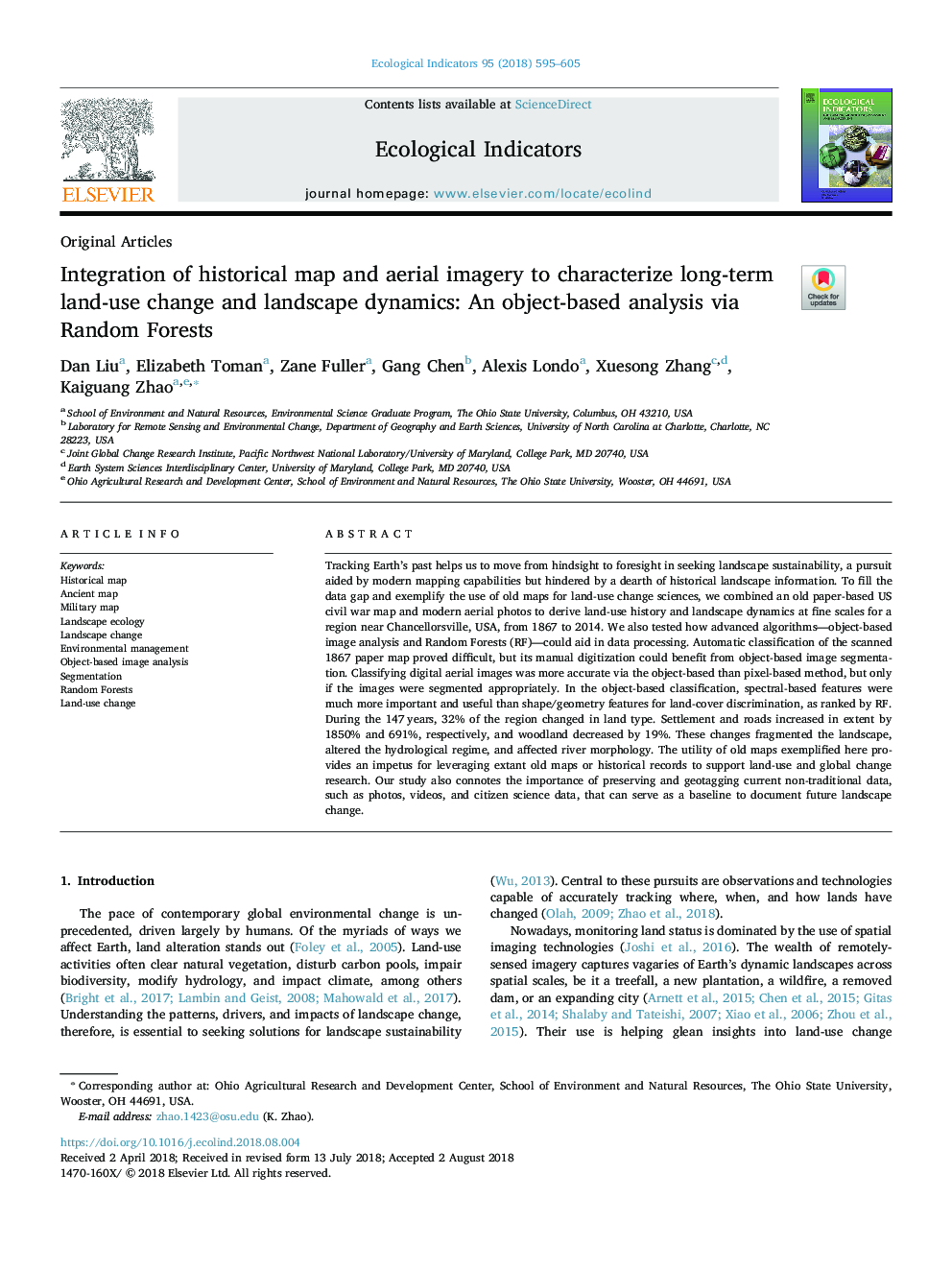| کد مقاله | کد نشریه | سال انتشار | مقاله انگلیسی | نسخه تمام متن |
|---|---|---|---|---|
| 8845006 | 1617107 | 2018 | 11 صفحه PDF | دانلود رایگان |
عنوان انگلیسی مقاله ISI
Integration of historical map and aerial imagery to characterize long-term land-use change and landscape dynamics: An object-based analysis via Random Forests
ترجمه فارسی عنوان
ادغام نقشه تاریخی و تصاویر هوایی برای توصیف تغییرات درازمدت زمین و دینامیک چشم انداز: تجزیه و تحلیل مبتنی بر شیء از طریق جنگ های تصادفی
دانلود مقاله + سفارش ترجمه
دانلود مقاله ISI انگلیسی
رایگان برای ایرانیان
کلمات کلیدی
نقشه تاریخی، نقشه باستان، نقشه نظامی، محیط زیست چشم انداز، تغییر چشم انداز، مدیریت زیست محیطی، تجزیه و تحلیل تصویر مبتنی بر شی، تقسیم بندی، جنگل های تصادفی، تغییر کاربری زمین،
موضوعات مرتبط
علوم زیستی و بیوفناوری
علوم کشاورزی و بیولوژیک
بوم شناسی، تکامل، رفتار و سامانه شناسی
چکیده انگلیسی
Tracking Earth's past helps us to move from hindsight to foresight in seeking landscape sustainability, a pursuit aided by modern mapping capabilities but hindered by a dearth of historical landscape information. To fill the data gap and exemplify the use of old maps for land-use change sciences, we combined an old paper-based US civil war map and modern aerial photos to derive land-use history and landscape dynamics at fine scales for a region near Chancellorsville, USA, from 1867 to 2014. We also tested how advanced algorithms-object-based image analysis and Random Forests (RF)-could aid in data processing. Automatic classification of the scanned 1867 paper map proved difficult, but its manual digitization could benefit from object-based image segmentation. Classifying digital aerial images was more accurate via the object-based than pixel-based method, but only if the images were segmented appropriately. In the object-based classification, spectral-based features were much more important and useful than shape/geometry features for land-cover discrimination, as ranked by RF. During the 147â¯years, 32% of the region changed in land type. Settlement and roads increased in extent by 1850% and 691%, respectively, and woodland decreased by 19%. These changes fragmented the landscape, altered the hydrological regime, and affected river morphology. The utility of old maps exemplified here provides an impetus for leveraging extant old maps or historical records to support land-use and global change research. Our study also connotes the importance of preserving and geotagging current non-traditional data, such as photos, videos, and citizen science data, that can serve as a baseline to document future landscape change.
ناشر
Database: Elsevier - ScienceDirect (ساینس دایرکت)
Journal: Ecological Indicators - Volume 95, Part 1, December 2018, Pages 595-605
Journal: Ecological Indicators - Volume 95, Part 1, December 2018, Pages 595-605
نویسندگان
Dan Liu, Elizabeth Toman, Zane Fuller, Gang Chen, Alexis Londo, Xuesong Zhang, Kaiguang Zhao,
